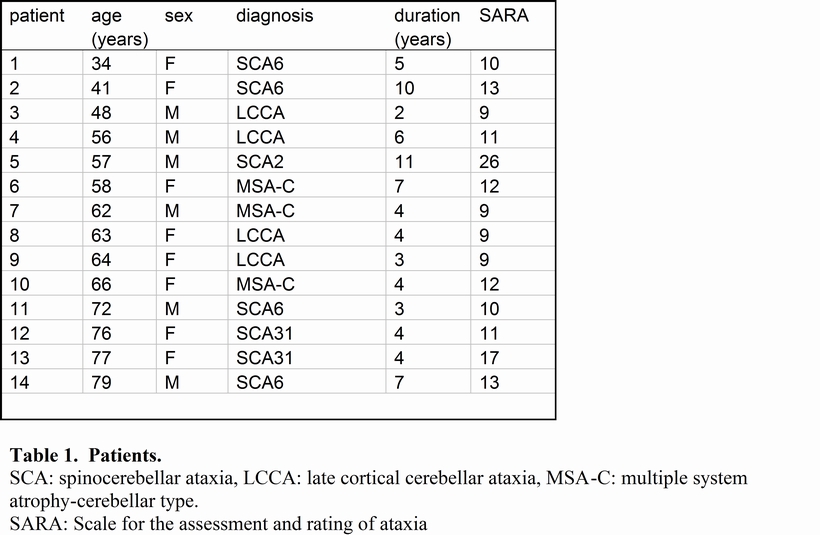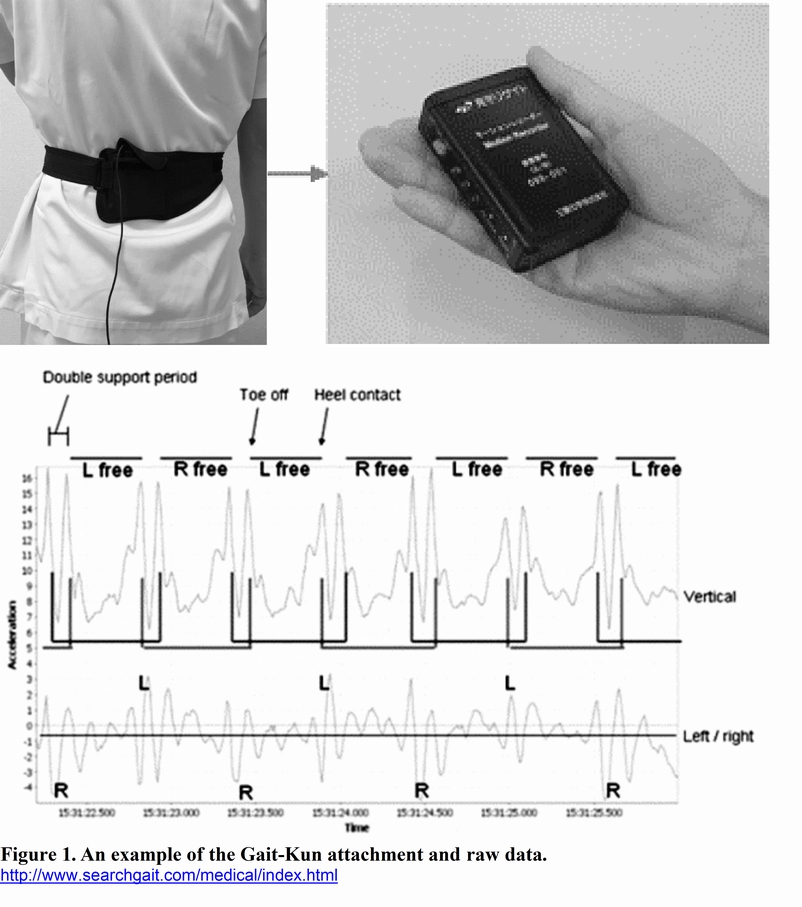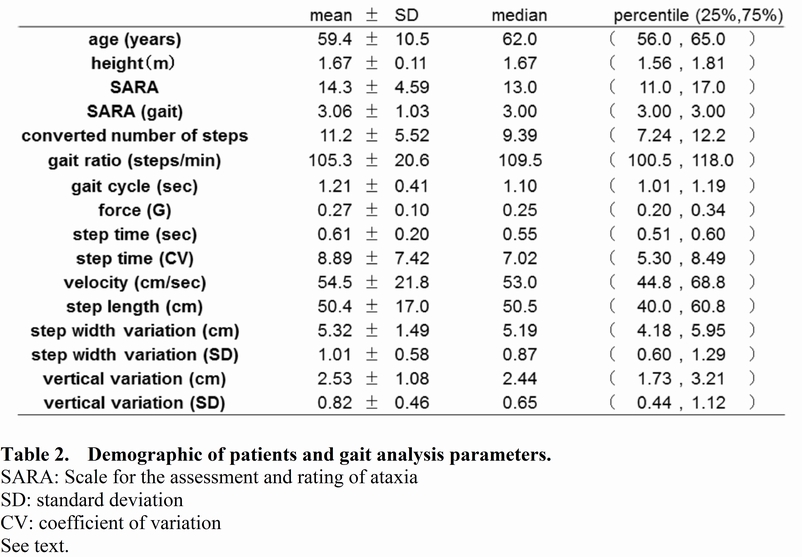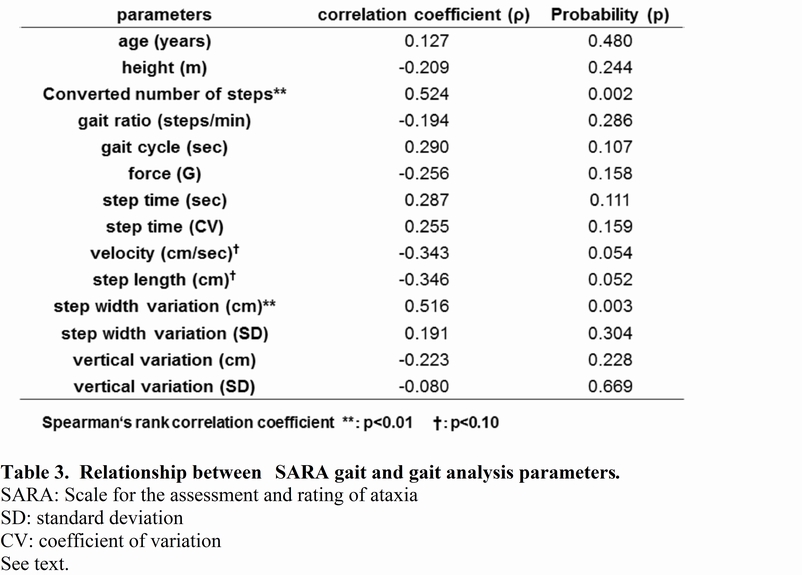Session Information
Date: Wednesday, June 7, 2017
Session Title: Ataxia
Session Time: 1:15pm-2:45pm
Location: Exhibit Hall C
Objective: We aimed to correlate a bed-side ataxia measure with wearable gait sensors parameters in cerebellar ataxia patients.
Background: Limited attention has been paid to the relationship between wearable gait sensors in cerebellar ataxia.1,2
Methods: We recruited 14 cerebellar ataxia patients (Table 1) who are able to walk independently: 6 men and 8 women; mean age 59.4 years; disease duration 5.3 years; pure cerebellar type 10, cerebellar-plus type 4 but symptoms other than cerebellar ataxia were minimum. All patients underwent the scale for the assessment and rating of ataxia (SARA) and the Gait-Kun system (Fig 1), a wearable gait sensor with triple-axial accerelometers. Statistical analysis was made by Spearman’s rank correlation coefficient test and multiple regression analysis test. Significance is estimated as p <0.05.
Results: Demographic of patients, SARA, Gait-Kun are shown in Table 1 and 2. 1) The Gait-Kun system can be used easily in cerebellar ataxia patients; 2) there was a close relationship between SARA gait subcategory and converted number of steps (indicating shorter stride) (p<0.01), step width variation (indicating staggering) (p<0.01) by Spearman’s rank correlation coefficient test (Table 3); 3) a close relationship between SARA gait and converted number of steps (indicating shorter stride) (p=0.001) by multiple regression analysis test. (Table 4)
Conclusions: Using the Gait-Kun system (wearable sensors), there was a close relationship between SARA gait subcategory and converted number of steps and step width variation, indicating not only wide-base variability but also shorter stride is a feature of ataxic gait abnormalities.
References: 1 Mari S, Serrao M, Casali C, Conte C, Ranavolo A, Padua L, Draicchio F, Iavicoli S, Monamı S, Sandrini G, Pierelli F. Turning strategies in patients with cerebellar ataxia. Exp Brain Res 2012; 222: 65–75. 2 Morton SM, Bastian AJ. Cerebellar contributions to locomotor adaptations during splitbelt treadmill walking. J Neuroscience 2006; 26: 9107–9116.
To cite this abstract in AMA style:
R. Sakakibara, K. Terayama, O. Akihiro, H. Haruta, T. Akiba, F. Tateno, M. Kishi, Y. Tsuyusaki, Y. Aiba, T. Ogata. Wearable gait sensors to measure degenerative cerebellar ataxia [abstract]. Mov Disord. 2017; 32 (suppl 2). https://www.mdsabstracts.org/abstract/wearable-gait-sensors-to-measure-degenerative-cerebellar-ataxia/. Accessed December 19, 2025.« Back to 2017 International Congress
MDS Abstracts - https://www.mdsabstracts.org/abstract/wearable-gait-sensors-to-measure-degenerative-cerebellar-ataxia/





